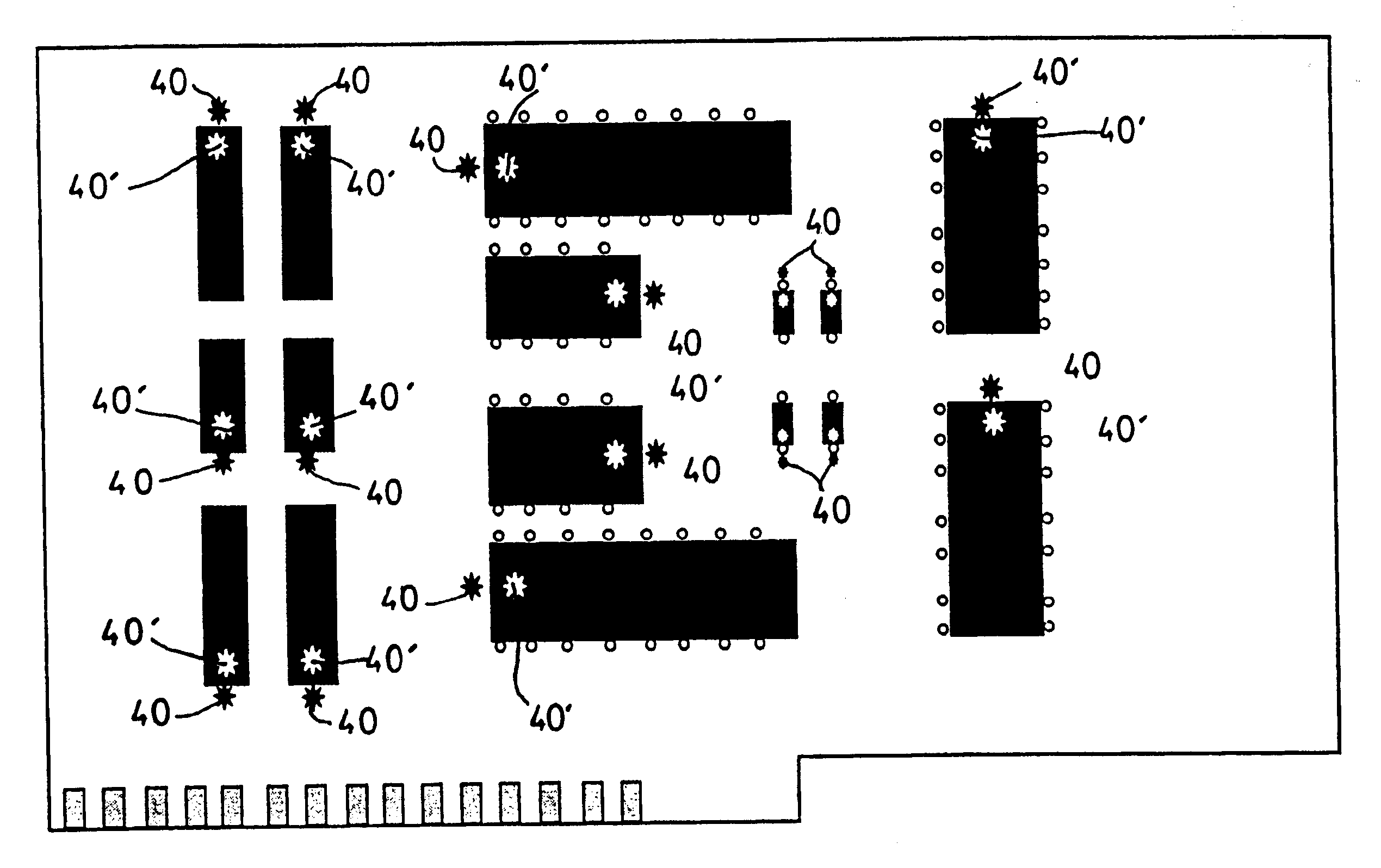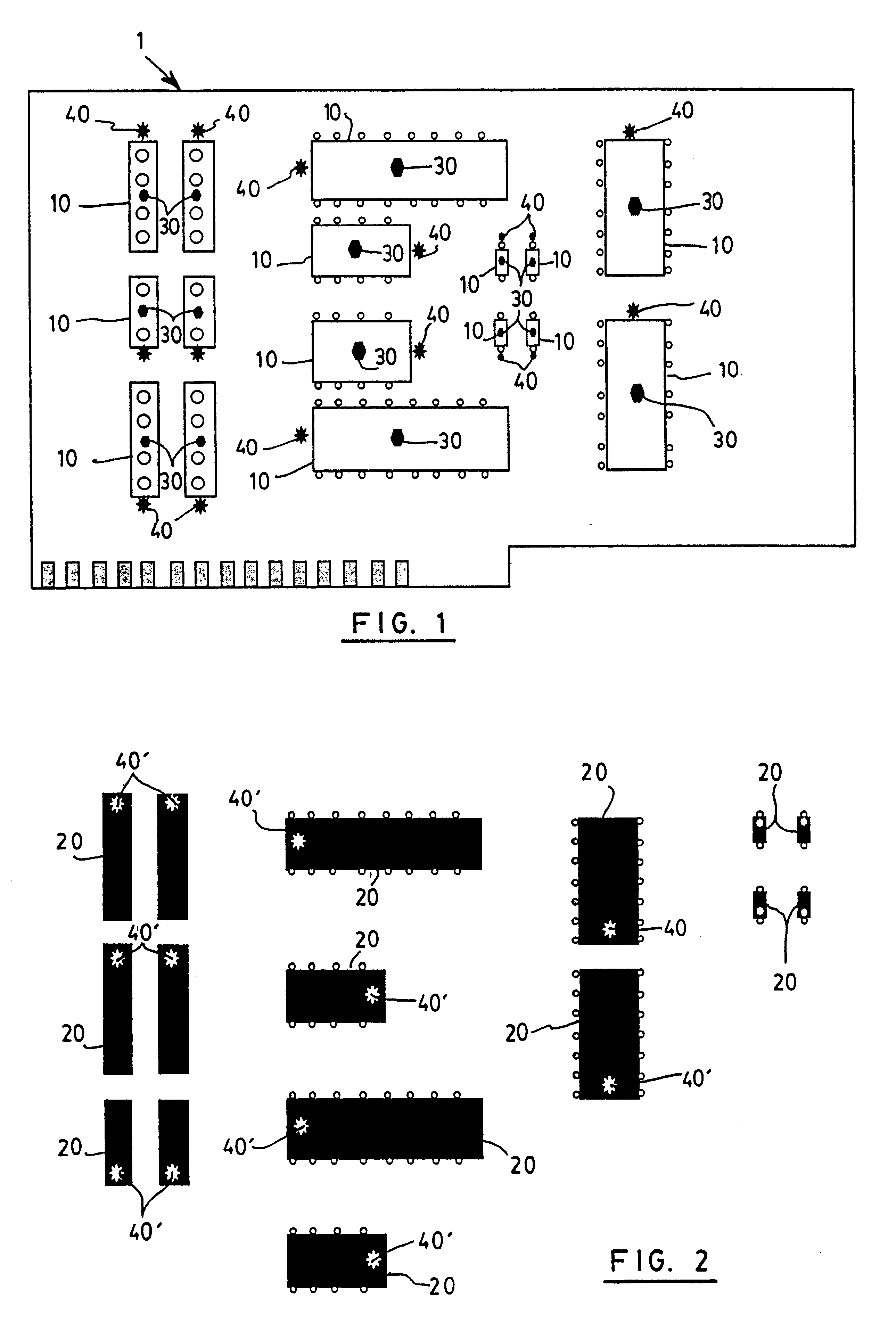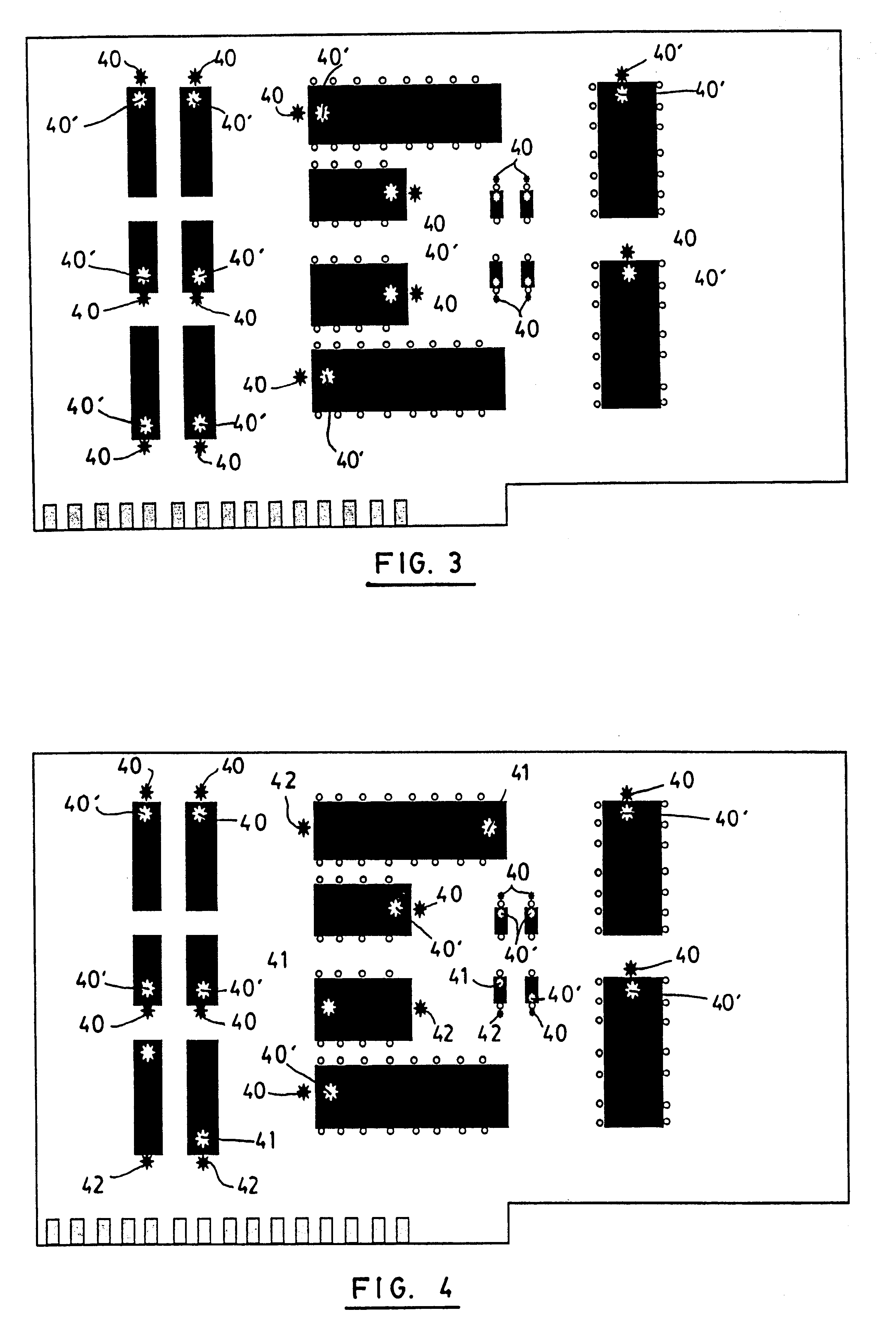Method for the verification of the polarity, presence, alignment of components and short circuits on a printed circuits board
a technology of printed circuits and alignment methods, applied in the direction of inspection/indentification of circuits, instruments, electrical apparatus contruction details, etc., can solve the problems of increasing the complexity of the orientation of given components, increasing the labor intensity of inspectors, and increasing the difficulty of inspection tasks
- Summary
- Abstract
- Description
- Claims
- Application Information
AI Technical Summary
Benefits of technology
Problems solved by technology
Method used
Image
Examples
Embodiment Construction
Referring now to FIG. 1, the invention is concerned with a method for the verification of the polarity and presence of components on a printed circuit board 1. The printed circuit board 1 is provided with a plurality of areas 10, each of which is designed to receive a component 20.
In order to determine if all of the components have been installed on the printed circuit board, also referred to as populating the board, each area 10 is provided with a marker 30, preferably in the center thereof. The marker 30 could be paint, etching, glue, coating or any other type of marking, but is preferably a marker which provides a UV signature. Also preferably, the UV marker is permanently accessible on the PCB and will not fade over time. It should be understood that although the present invention contemplates a layer or physical marking on a PCB, another solution is also possible. The present invention contemplates creating the marker by etching or designing the board in such a way that a UV co...
PUM
| Property | Measurement | Unit |
|---|---|---|
| polarity | aaaaa | aaaaa |
| area | aaaaa | aaaaa |
| areas | aaaaa | aaaaa |
Abstract
Description
Claims
Application Information
 Login to View More
Login to View More - R&D Engineer
- R&D Manager
- IP Professional
- Industry Leading Data Capabilities
- Powerful AI technology
- Patent DNA Extraction
Browse by: Latest US Patents, China's latest patents, Technical Efficacy Thesaurus, Application Domain, Technology Topic, Popular Technical Reports.
© 2024 PatSnap. All rights reserved.Legal|Privacy policy|Modern Slavery Act Transparency Statement|Sitemap|About US| Contact US: help@patsnap.com










